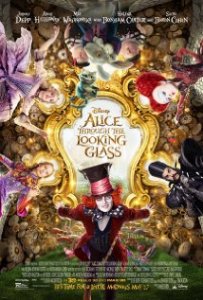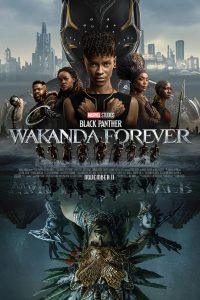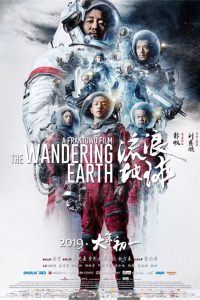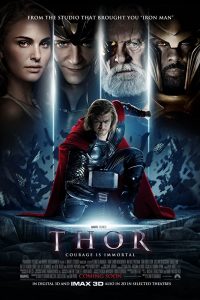Alice the Great and Powerful: A Review of Alice Through the Looking Glass
 by Gary Westfahl
by Gary Westfahl
The visual effects are regularly creative and engaging, and there are lines here and there that might make you laugh, but overall, anyone looking for 153 minutes of entertainment on this Memorial Day weekend would be best advised to read, or reread, Lewis Carroll’s Through the Looking-Glass, and What Alice Found There (1871) instead of watching this film, which borrows its title but none of its unique wit and charm. The work that it most recalls, as my title suggests, is the film Oz the Great and Powerful (2013 – review here), another thumb-fisted effort to “improve” upon a classic children’s book by adding new characters, new back stories for old characters, and an action-packed, melodramatic story line.
All these things might have been said about this film’s precursor, Tim Burton’s Alice in Wonderland (2010) (and largely were said in Howard Waldrop and Lawrence Person’s review here); its crucial flaw was to present itself as a sequel to Carroll’s classic books, featuring an adult Alice who is summoned back to the fantastic world she earlier visited, in what she imagined were childhood dreams, to fulfill a prophecy that she would slay the monstrous Jabberwock. The result was the incongruous imposition of an adult perspective upon a child’s world, generating a jarring mixture of surreal whimsy and grim conflicts that, while designed to appeal to viewers both young and old, should have alienated all of them. Yet the film somehow was a huge box-office success – bespeaking, perhaps, audiences’ fervent craving for superficial novelty from a risk-averse film industry increasingly driven to generating monotonous fare – so returning screenwriter Linda Woolverton and new director James Bolin naturally resolved to replicate everything that, they believed, made the first film so appealing. And so, they have doubled down on all the features that actually made Alice in Wonderland so appalling.
Thus: the first film was burdened by a tedious and largely irrelevant frame story; this one’s frame story is even more tedious and even more irrelevant. Indeed, the opening scenes, in which a seafaring Alice (Mia Wasikowska) battles to escape from pirates, recall Monty Python’s The Meaning of Life (1983) by beginning a film in a manner so bizarre as to make audiences suspect that they had entered the wrong theatre. Evidently deeming the original drama of defeating the dictatorial Red Queen (Helena Bonham Carter) insufficiently compelling, the filmmakers bring Alice back to Wonderland to rescue the dying Mad Hatter (Johnny Depp), grieving over the absence of his presumed dead, but now apparently alive, family, and the film concludes with Alice’s desperate efforts to prevent the apocalyptic destruction of everyone and everything in Wonderland. In the course of filling out the characters of the Red Queen, White Queen (Anne Hathaway), and the Mad Hatter, the first film provides a bit of their back stories; the second film kills time by providing them with families and including lengthy flashbacks describing their youth. Finally, Burton’s film introduces only one new character, Bayard the Bloodhound, otherwise relying solely on selected characters from Carroll’s books; Bolin’s film adds one character from Carroll – a briefly observed Humpty Dumpty (voice Wally Wingert) – marginalizes most of the returning characters, and primarily focuses on the new character of Time (Sacha Baron Cohen).
To echo the lame “time” jokes in the film, I must devote some time to Cohen’s strange character, the film’s most ineffectual element. Certainly, Cohen never quite figures out how to play the part, hampered by a script that alternately portrays him as a sinister scoundrel and a good-natured buffoon, and while one does not necessarily demand logic in a fantasy film, it is striking that Time sometimes seems to be in control of the entire universe and sometimes seems utterly incapable of doing anything at all. More disturbingly, a personified Time inevitably suggests the imagery of clocks and clockwork, inspiring the filmmakers to portray Time’s home as an immense, dark factory, filled with enormous gears and populated by tiny robots that never manage to be as cute as they are clearly intended to be. Further, the enormous clock at its center is powered by a “Chronosphere” that periodically expands to become a time machine, in part resembling a huge gyroscope and in part recalling Rod Taylor’s time machine in George Pal’s The Time Machine (1960). (Its only Carrollian touch is an activating handle labeled “Pull Me.”) This effectively transforms a classic fantasy into a science fiction film, as Alice makes repeated attempts to change past events, only to find she cannot do so, and the film’s final crisis involves the catastrophic impact of paradoxically encountering oneself in the past. Finally, as Time appears to be bringing a sort of Industrial Revolution to Wonderland, it is not surprising to observe signs of increasing urbanization in scenes of bustling towns filled with street vendors and shops.
This is one small aspect of this film’s overarching problem: in an odd prologue, perhaps shown only in AMC theatres, director Bolin explained that his goal was to retain everything that people liked about Carroll’s stories while adding something fresh and new. In fact, more often than not, the film is rejecting and repudiating its source material. Thus, while Carroll was never focused on consistent world-building, his Wonderland is always a bucolic environment, filled with vast expanses of natural beauty and isolated dwellings, and it always appears to be summertime; it doesn’t seem right to have Alice walking through the snow, wandering into a factory, and jostling her way down a crowded city street.
One might say this represents a minor adjustment for contemporary audiences that may spend little if any time in bucolic environments; but a more grievous mutilation of its superb source is the film’s incessant moralizing. If Carroll’s books have a unifying theme, it is that Victorian children were being raised in a stultifying atmosphere of dull, didactic stories and poems, and he set out to skewer them all with sparkling parodies that have survived far longer than their dreary targets. He would absolutely recoil, then, at a story that kept pounding home trite, inspirational messages – always strive to achieve the impossible! Nothing is more important than your family! If Carroll heard one of the truisms recited by Alice in this film – “The only things worth doing are the things you do for others” – he would immediately want to make fun of it: “The only things worth doing are the things you do to others,” or “The only things worth doing are the things you do for yourself.”
It is perhaps significant, then, that the name of Alice’s father in both films is Charles Kingsleigh, recalling Victorian priest and author Charles Kingsley (1819-1875); for he is best known for writing The Water-Babies, A Fairy Tale for a Land Baby (1863), a children’s story dominated by the sorts of moral messages that Carroll abhorred. One can say, then, that Alice in Wonderland and Alice through the Looking Glass represent what the Alice books would have been like if they had been written by Kingsley.
A problem related to the film’s focus on conveying worthwhile messages is that the most delightful aspect of Carroll’s books – their wonderful sense of humor – is necessarily pushed to the sidelines, as one cannot joke about serious matters like pursuing your dreams or helping other people. As noted, there are some amusing lines, but it is as if a quota was established beforehand, so the jokes had to be carefully rationed out. The most damning observation to make in this regard is that I cannot recall a single moment in the film when the Mad Hatter did, or said, anything funny. The Mad Hatter isn’t funny! Instead, we are repeatedly informed, and shown, that he is a warm, wonderful, sensitive human being; somehow, however, Carroll’s Mad Hatter, who displayed none of these fine qualities, is more endearing.
One must finally consider Carroll’s proposed solution to the problems faced by repressed Victorian children: namely, getting away from it all. Alice travels to Wonderland because she is bored with her everyday life, and the most significant aspect of her adventures is that, in contrast to L. Frank Baum’s Dorothy, she is a relentlessly solitary traveler. She finds the people that she encounters to be mostly bothersome, and while she does have a few friendly encounters, she never makes any friends. Without trivializing the point as an explicit, uplifting lesson, in other words, Carroll consistently celebrates the virtues of running away, being by yourself, and enjoying the freedom of complete solitude.
In contrast, Bolin and Woolverton’s Alice is burdened by family ties: she misses her dead father, she loves her mother, she is constantly accompanied by supportive friends, and she is deeply attached to the Mad Hatter (even though he never does anything, in either film, to justify this extreme affection). Carroll’s Alice never expresses any desire to return home – instead, her adventures end and she suddenly finds herself back home; the film’s Alice goes home because she wants to see her beloved mother again. And she isn’t the only character focused on her family: the Mad Hatter longs for his missing family, has been scarred his entire life because his father seemed to reject him, and is overjoyed upon finally learning that his father really loves him. The Red Queen does evil things because she remains traumatized after being unfairly punished as a child and feels that “no one loves me”; however, she seems poised to reform when her sister finally apologizes and expresses her love for her. As I mentioned in an earlier review, Hollywood probably keeps falling back on extolling “family values” because it is the only theme that never arouses any protests. (Perhaps, though, it is time for a group of dedicated loners to form a new organization devoted to denouncing “familionormative” stories.)
For these reasons, I would gently disagree with the way that Linda Woolverton characterizes her own take on the Alice books, as she imagines she has created a fiercely independent, proto-feminist woman who courageously defies the restrictions imposed on women by Victorian society by rejecting an attractive marriage proposal, undertaking a career as a sea captain, and thwarting her rejected suitor’s attempt to humiliate her. However, it is also true that this Alice can never get through the day without someone’s helping hand. So, I would argue that, in her own polite fashion, Carroll’s Alice is a more genuinely liberated woman.
Woolverton also strives to be politically correct regarding one aspect of Alice of Wonderland that was widely criticized, Alice’s apparently “colonialist” desire to travel to China and, presumably, impose European rule and European values. In this film, Alice stresses that she only wishes to trade with China, not to dominate the country, and she further pays tribute to Chinese culture by wearing a colorful Chinese gown to a party hosted by her tormentor Hamish (Leo Bill), said to be what she wore during an audience with the Chinese empress. It is surprising, though, that Alice Through the Looking Glass fails to emulate Oz the Great and Powerful by crafting a multiracial Wonderland, as I only recall observing Caucasian residents (unless one counts large, anthropomorphic animals as gestures toward racial diversity).
One can further criticize Woolverton for an evident lack of originality; for, in pondering how to write a sequel to a successful adaptation of a classic children’s fantasy, she clearly watched, and borrowed from, another sequel to such an adaptation, Return to Oz (1985). As in that film, Woolverton follows a film with a prominent female villain by introducing a new, very tall, male villain; one of the robotic “seconds” in Time’s dwelling, the put-upon servant Wilkins, resembles the earlier film’s Tik-Tok, and the Red Queen’s servant and soldiers made out of vegetables recall Jack Pumpkinhead; when the seconds combine to form larger “minutes” and a gigantic “hour,” they look like Return to Oz’s rock creatures; and while the residents of Oz are imperiled because they are being turned into stone statues, the residents of Wonderland are at one point imperiled because they are being turned into rusty orange statues. Most tellingly, Woolverton emulates the earlier film by having a woman who returns from a fantastic world be misdiagnosed as insane and placed in an oppressive facility in order to be “cured” of her supposed madness (though Dorothy’s evil doctor prefers electric shocks and Alice’s evil doctor threatens her with a tranquilizing injection). Fortunately, both Dorothy and Alice are able to run away from the institution and soon are back in their respective wonderlands.
Still, Woolverton does diverge from this film – and other recent films – in one significant respect: just as Oz’s original wicked witches were killed without remorse, Return to Oz’s Nome King also dies unrepentant; however, though he at first seemed repellent, Time is ultimately presented as a basically good guy, and as indicated, even the Red Queen is recast as a victim, not a villain, and it appears that, all her sins forgiven, she will become a nice person as well. In an era when films are frequently devoted to demonizing and destroying irredeemably evil opponents, it is heartening to observe a film suggesting that apparently awful people may simply be misunderstood, and that conflicts can end with reconciliations instead of victories. It is an attitude, I think, that is sorely needed in today’s polarized political climate.
One should also praise Alice Through the Looking Glass for its inventive visual touches. When Alice first ventures through the looking glass, we see the head of a tiger-skin rug growling; to placate the visiting Red Queen, forever demanding people’s heads, Time gives her a music box adorned with a tiny figure who uses an ax to behead another figure; depicting time travel as a flight through a vast ocean, featuring images of past events, is quite arresting; and I am not sure why the Red Queen is seen living in an immense tree, filled with people made out of vegetables, but it’s fun to watch. And the woefully underutilized Cheshire Cat, spinning and floating in space while disappearing and reappearing, is a visual delight, and he is also refreshing as the character least interested in dispensing moral lessons or expressing concerns about other characters’ fates. That is to say, he is the one character in the film who actually reflects the opinions of Lewis Carroll; and if this film is as inexplicably successful as its predecessor, generating demands for a second sequel, I would suggest dispensing with Woolverton’s boring superwoman Alice and instead developing a spinoff feature starring the Cheshire Cat, who frolics through a series of episodic adventures in Wonderland without ever giving a damn about anything – a film, in other words, that Carroll himself might have enjoyed.









What little I saw of the first of these Alice movies makes me want to stay away from this one. Can’t Disney and Hollywood and (maybe) Tim Burton crap on their original ideas and not some of our beloved childhood memories?